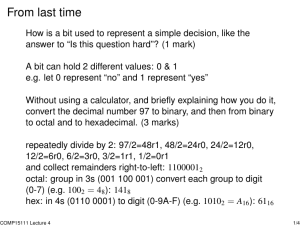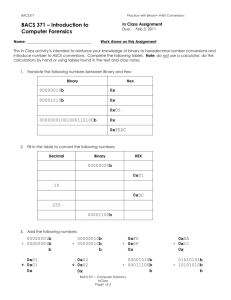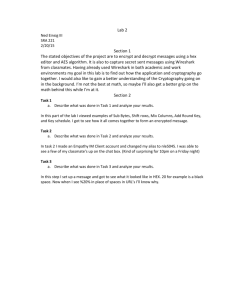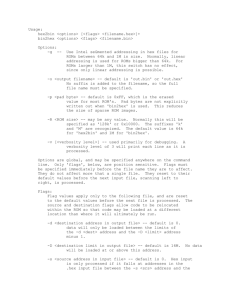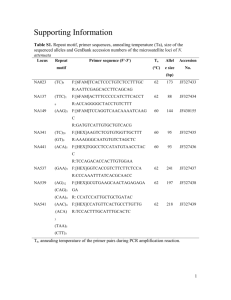NASH: An intelligent Hex player
advertisement
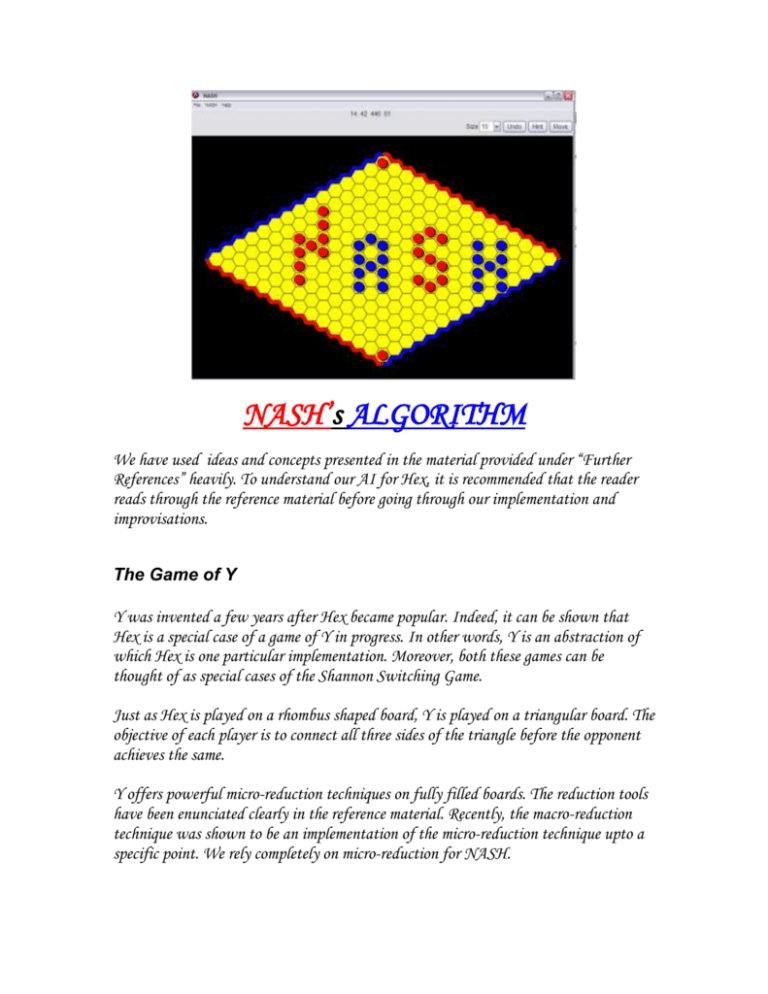
NASH’s ALGORITHM We have used ideas and concepts presented in the material provided under “Further References” heavily. To understand our AI for Hex, it is recommended that the reader reads through the reference material before going through our implementation and improvisations. The Game of Y Y was invented a few years after Hex became popular. Indeed, it can be shown that Hex is a special case of a game of Y in progress. In other words, Y is an abstraction of which Hex is one particular implementation. Moreover, both these games can be thought of as special cases of the Shannon Switching Game. Just as Hex is played on a rhombus shaped board, Y is played on a triangular board. The objective of each player is to connect all three sides of the triangle before the opponent achieves the same. Y offers powerful micro-reduction techniques on fully filled boards. The reduction tools have been enunciated clearly in the reference material. Recently, the macro-reduction technique was shown to be an implementation of the micro-reduction technique upto a specific point. We rely completely on micro-reduction for NASH. MICRO-REDUCTION: LEMMA 1: A completely filled Y-board having 2 hexes along each side can be reduced to a single hex containing the winner of that board. (An ending case). LEMMA 2: A Y-board of size n can be reduced to that of size n-1 by applying LEMMA 1 on each distinct triangle on the board. Using these lemmas, it is possible to reduce a completely filled board of size n to a single hex (a linear recursion) containing the winner’s token. We use “probability of ownership” technique in a radically different way than that enunciated in our reference. PROBABILITY OF OWNERSHIP: We assign +1 to hexes occupied by ,say, Player 1, and -1 to hexes occupied by Player 2. However, instead of simply assigning 0 to unoccupied hexes, we call a routine that starts searching for 1-connected neighbours of an occupied hex (adjacent to that hex) and 2-connected neighbours of that hex (those hexes which become 1-connected after every possible move by the opponent). Such unoccupied hexes have a slightly negative value (since playing at that hex is desirable, we make it –ve so that after playing, the difference before and after the move is more, and as we shall see later, our AI uses this difference.) Further, Y-reduction currently does not give identical answers for a board and the mirror image of that board. We have overcome this problem by averaging the differences over the board as well as its mirror. Using these improvisations and optimizations, we managed to develop a reasonable AI which, however, took exceptionally long times to produce an answer for larger board sizes. DIFFERENTIAL CALCULUS OPTIMIZATIONS: Currently, the AI would have to assume a move played at each available hex (n2 times) and then perform Y-reduction (a O(n3) algorithm). This leaves us with n5 steps. Using ideas from differential calculus, it is possible to reverse the reduction, i.e, go from a single hex to a board of size n. This board, which would have a spread of values would indicate the amount by which the resultant “probability-of-win” changes if the player plays there. This would require only 2n3 steps, and achieves a less accurate answer to our problem. We toyed with the idea of memoisation as we go down the game tree, but space (Hard disk and RAM usage) and time (our time) constraints forced us to drop the idea. That about sums it up for NASH. FURTHER REFERENCES : y-hex.pdf : A summarized source of current algorithms that are in use to simulate an AI for hex. This is one of possibly three materials on the internet (as of March 2007) that discusses the possibility of Y reductions in Hex.
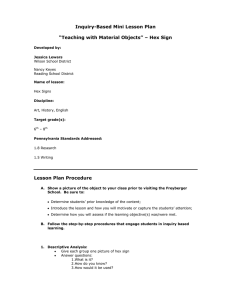
![%SYS-3-OVERRUN : Block overrun at [hex] (red zone [hex])](http://s3.studylib.net/store/data/007301636_1-ac70f3209bae6dd18e3a1bf696206cf5-300x300.png)
